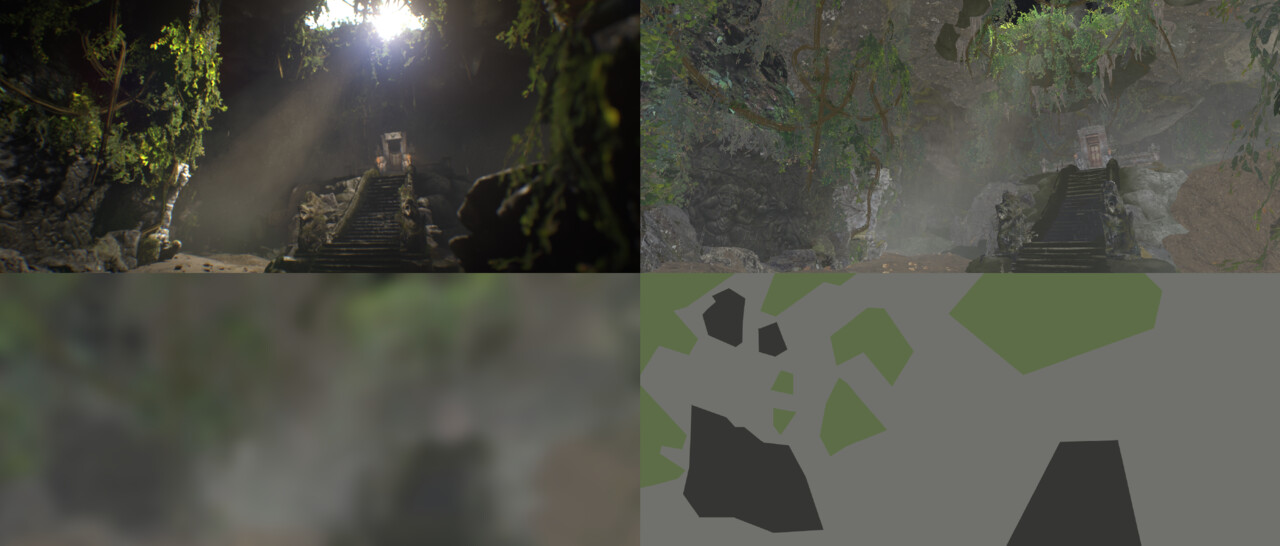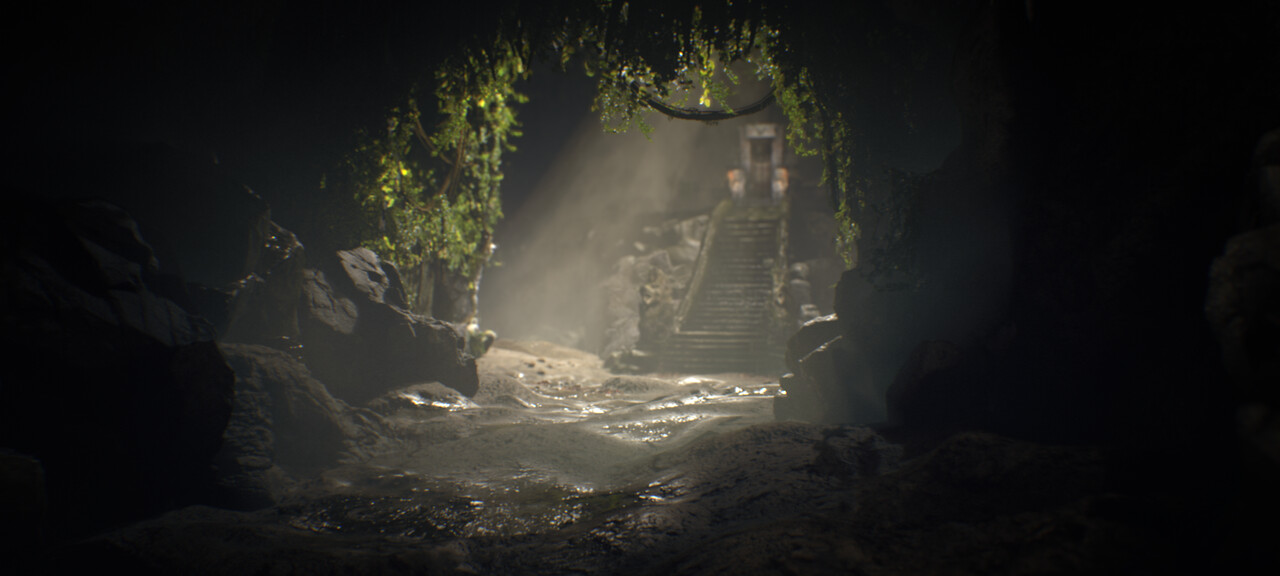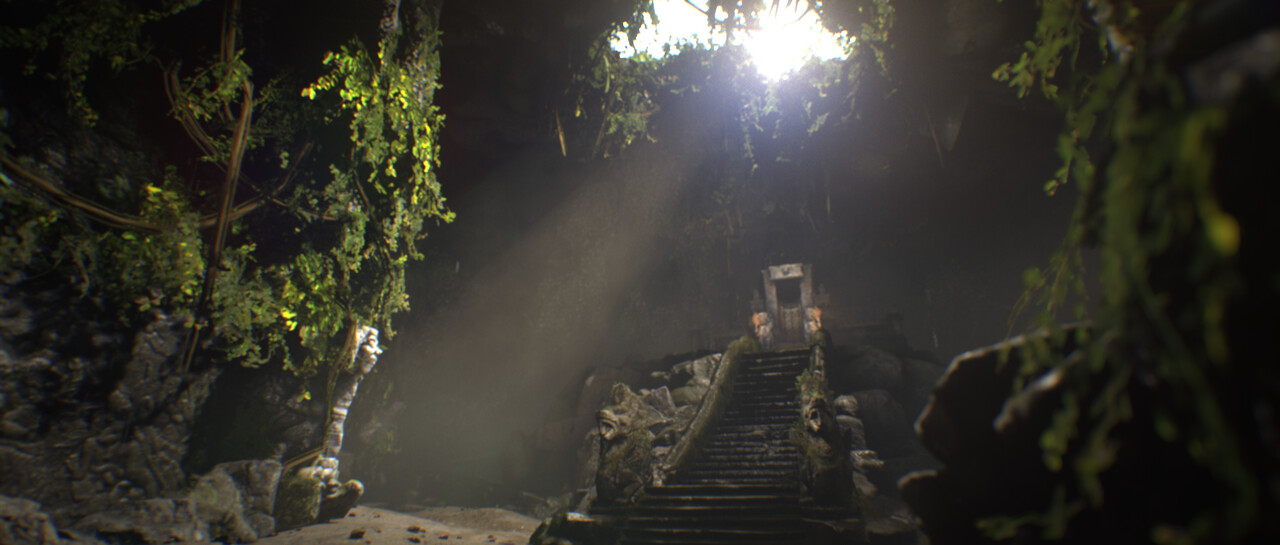Hey guys, welcome back to my thesis blog!
Following my thesis research from last week, I'll be talking more about how I implemented landmarks and symbolism along with visual language into my project. If you haven't seen the Gnomon talk, be sure to look at it!
4. Landmarks and Symbolism in Practice
The temple environment is designed to represent a clear destination point which can be seen throughout the different stages of the journey. A hint of the temple area can be seen even during the earlier shots to draw the viewer’s attention, inferring that the cave is just an entrance part of the environment. In general, the environment design resonates with the Balinese architecture philosophy. The environment can be divided into three separate landmarks: an entrance, an outer pavilion and the inner shrine.
Fig. 8. Temple Landmark
In addition, the environment design also symbolizes the sacrality of the space. The idea of sacrality is highlighted with the light coming through the hole with the temple appears high above the ground. In the end, the creation of these landmarks filled with symbolism help inform the narrative theme established earlier in the concept development phase.
Fig. 9. Temple Landmark symbolizing Sacrality
5. Visual Language in Practice
Working in a digital space makes environment artists often forget that they are building a realistic space with different constraints and limitations. By understanding the limits of the space and dealing with those constraints, it will lead to a better environment design. Dan Cox, Senior Artist at Blizzard Entertainment, discussed the parallels between interior design principles and environment art at the GDC '14.
Interior designers also use an interesting rule of 60-30-10 . The rule is about the use of a desaturated color for a 60% amount of the space, with 30% being a more saturated color, and the last remaining 10% often meant for large bold pops of color. It is a useful technique in order to create an effective color scheme for an environment. This approach also allows the viewer to focus on one specific area of the environment, which leads to a better understanding of the space.
Fig. 10. Environment Color Breakdown
The color breakdown shows how the environment looks like in lit and unlit mode. Using the 60-30-10 rule as a guideline, I made sure that green becomes the focal point of the environment color. This approach allows the environment to re-enforce the idea that Balinese art must be infused with life, a common concept within the Balinese community. Ultimately, the small hints of Balinese culture scattered throughout the environment helps the viewer to a better understanding of the space.
Conclusion
In general, history and cultural context has a significant influence in the creation of a fictional world especially in the modern pop culture. As Rogelio Olguin said during the talk, the added layer of history helps turn an environment concept into a believable world for the viewer. The Balinese has a distinctive attitude to art that is comparable to how environment art is developed. In Bali, art is driven by a narrative theme of devotional act towards their beliefs.
Visually, Balinese art is known for their decorative carvings, full of symbolism towards life. In addition, the construction of Balinese architectures is divided into three zone of landmarks, which makes it comparable to a common strategy in creating an environment art. Thus, Balinese culture might be a more suitable reference for environment storytelling.
This is it for this week's update, I'll show the final renders of my cinematic environment next week. 'Till next time!

